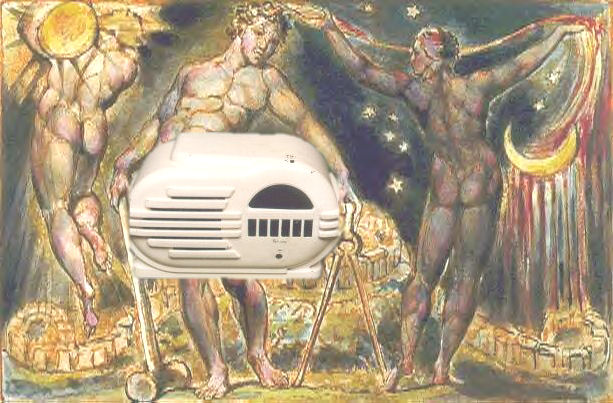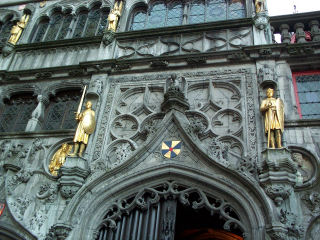Radio theory - what is it for? What is it?

What does radio theory deal with?
|
Radio theory deals with basic principles of radio, not specific radio programmes or texts or pieces. Thus it has a somewhat 'abstract,' intangible quality to it. Radio is difficult to explain because it is so easy to understand. What is it that academic theorists of radio can claim to do that others - all those practitioners, listeners, fans on the Internet, reviewers, critics and pundits - cannot? What knowledge or understanding can we claim to bring, as teachers and students? Are we superior to the others and to those listeners out there? Does all of radio warrant the sustained attention that is devoted to works of literature, to film and to visual art? See also Tacchi, Jo, 2000, 'The need for radio theory in the digital age', International Journal of Cultural Studies, Vol 3 (2), 289-298. |

MIDDLE RANGE THEORISING FOR RADIO AND RADIO DRAMA
|
NOT MASTER-NARRATIVE or OVER-ARCHING THEORY Following Branston 1992, and film's POST-THEORY MOVEMENT (Allen and Smith 1997), it would seem better not to pursue MASTER-NARRATIVE or OVER-ARCHING THEORY for radio. David Bordwell and Noel Carroll, in Post-Theory: Reconstructing Film Studies (Bordwell and Carroll,1996), argue for a range of theoretical models focused on 'small' or 'middle-range' problems, rather than a single, all-encompassing Theory. Branigan, 1992:
Objections to this middle-range theorising approach come, for example, from the subject area of anthropology. Shanks and Tilley, 1987, 44 argue: 'Middle range theory means little more than middle range empiricism, and what is supposedly "middle" about it far from clear.' However, this is to range very widely in such a foundational argument, as anthropology depends on empirical research in fieldwork (epistemic 'why-questions'. statistics), and is not concerned so directly with fiction works as a main focus of study (as film and radio drama). But the need always is to arrive at testable propositions. For science, these have been famously established by Hempel 1965 (functions and characteristics of the scientific explanation) and Popper 1959 (falsifiability rather than verifiability was the hallmark of good science). |
The result is that some middle-range research is:
| ideographic (in contrast to nomothetic) - concerned with particular events and realities |
| eclectic (in contrast to traditional) - draws together techniques from a diversity of methodological traditions and these may contradict each other potentially |
| inter- or multi-disciplinary - rather than disciplinary |
References here:
Shanks, Michael and Tilley, Christopher, 1987, Re-Constructing Archaeology. Theory and Practice, London: Routledge.
Hempel, C. G., 1965, Aspects of Scientific Explanation. Free Press
Popper, Karl, 1959, The logic of scientific discovery, New
York: Basic Books
Branigan, Edward, 1992, Narrative Comprehension and Film, London:
Routledge
Allen, Richard and Smith, Murray, 1997, Film Theory and Philosophy, Oxford: Oxford University Press.
Bordwell, David and Carroll, Noël, eds., 1996, Post-Theory. Reconstructing Film Studies, Wisconsin and London: University of Wisconsin Press

THE FLIGHT FROM MASTER NARRATIVE THEORY
| The 1970s (for film) and 1980s (for literary theory) marked the high water-mark of master-narrative theory building. There were 'theory wars' and for various subject areas, this was the 'moment' of theory. The topic was fashionable and controversial. |
| The grand structuralist project to understand human culture as a whole in terms of patterns of meaning. |
| These 'grand' theories had political goals. |
| From the 1990s, there has been a flight from grand explanations. The moves are to middle-range theory, to eclecticism, and special-interest forms of criticism and theory. |
| Postcolonialism, for example, rejects the idea of a universally applicable Marxist explanation. It emphasises the separateness or otherness of post-imperial nations and peoples. |
| Post-theory - Allen and Smith 1997, Bordwell and Carroll 1996, Docherty 1990 |
|
NOTE: 'you can see only as much as your model permits you to
see' (Jameson, 1974, 14) Fredric Jameson The Prison-House of Language. A Critical Account of Structuralism and Russian Formalism Princeton, N J: Princeton University Press 1974 |
References here:
Allen, Richard and Smith, Murray, 1997, Film Theory and Philosophy, Oxford: Oxford University Press.
Bordwell, David and Carroll, Noël, eds., 1996, Post-Theory. Reconstructing Film Studies, Wisconsin and London: University of Wisconsin Press
Docherty, Thomas, 1990, After theory: Postmodernism/postmarxism, London: Routledge.
McQuillan, Martin, Macdonald, Graeme, Purves, Robin and Thomson,
Stephen, 1999, Post-Theory. New Directions in Criticism, Edinburgh:
University Press.

Radio theory is more than 'culturalism'
|
CULTURALISM is defined by: social, political, and identificatory concerns political economy approach and representation For an account of the British counterpart of this movement, known as "cultural materialism," see Scott Wilson, Cultural Materialism: Theory and Practice (Oxford: Blackwell, 1995). engaged interventionist analysis that made film theory such a vital force in the academy during the 1970s and 1980s" (Collins, Radner, and Collins 1993: 2-3). My focus on the 1980s and 1990s allows me to consider film music's role in the changing pressures of identity formations such as race, ethnicity, sexuality, and gender. |

|
Beck, Alan, 2001b, 'Playing By Ear: new ways of teaching and researching radio drama, Studies in Theatre Production at http://www.savoyhill.co.uk/playingbyear/index.html Beck, 2000b, 2.4 Doubtless culturalism instilled in media academics a sense
of empowerment. By studying movies and TV shows one could purportedly
contribute to political struggles on behalf of the disadvantaged.
|
 ]
]
'New' radio studies - Alan Beck's future directions
| OBJECT-STUDY & SUBJECT-STUDY: divide radio studies into two - object-study (what programmes are broadcast, how broadcast and how regulated - approaches through cultural materialism, for example) and subject-study (who is listening - reception theory / studies) |
| apparatus-reception theory grouping |
| ethnographic studies of the new technologies |
| THE DIGITAL CHALLENGE TO RADIO STUDIES - new kinds of knowledge demanded |
| converging and disappearing 'core' of radio teaching - post-disciplinary? |
| We have not reached the end of the 'subject definition' stage yet. Technology keeps changing. Listening keeps changing. |
| 'Hard' radio studies - media/cultural studies focused on issues of mass communications, political economy, public policy, institutional aspects of radio, representation, gender, ethnic issues, media imperialism, reception studies (ethnographic and so on), etc |
| 'Soft' radio studies - 'more-than-radio' movement, pointing beyond context issues ('hard') to aesthetics, phenomenology, etc. |
| listening-in-itself (aurality) as a more focused area |
|
Beck, Alan, 2002, The Death of Radio? An Essay in Radio Philosophy for the Digital Age. Online book. Published by Sound Journal at http://www.savoyhill.co.uk/deathofradio/ Introduction 7 As an initial approach, it is possible to divide radio studies into two - object-study (what programmes are broadcast, how broadcast and how regulated - approaches through cultural materialism, for example) and subject-study (who is listening - reception theory / studies). I take these divisions from film theory. The object is the 'signifying text', as for example, in New Vocabularies in Film Semiotics (Stam, 1992, 32). Gill Branston talks of film's object/subject model, but warns how each theory approach 'ignor[es] huge areas that it cannot or does not want' (Branston, 2000, 26). This binary division into object-study and subject-study is at least a starter. The apparatus, in my apparatus-reception theory grouping, assumes more importance because of so many advances and new uses. We are at the beginning of ethnographic studies of the new technologies (e.g. Tacchi's work). But slicing up the theory cake after that is troublesome, as emerges from my argument below. Perhaps the digital challenge to radio theory-building will turn out to be a radical one.
Introduction 8 We are at a dynamic time of change, as outlined above. Radio's boundaries have moved, reconfiguring in the digital age. For nearly fifty years, since the arrival of stereo and the transistor, radio technology has remained largely the same. Its UK industrial structure has shifted, with the coming of commercial radio, then multi-media networks and various strategic alliances. This article is mostly confined to issues in the UK and Bruce Owen helpfully outlines the changes in USA radio, in his The Internet Challenge to Television (Owen, 1999, 52-78). He also defines the digital initially as: … a way of communicating in new forms and processing
data much more cheaply. New kinds of knowledge are demanded from researchers, new analytical skills and a disciplinary consciousness. The 'core' of teaching and researching about media reconfigures now - some converging, some disappearing. This change affects radio studies as it is located in the academy, curricula, peer-review panels, etc. Jo Tacchi first clearly sounded the call for new theory work on 'the study of radio and soundcasting [that] should challenge disciplinary and methodological boundaries' (Tacchi, 2000, 290-1). She stressed that 'radio studies, or radio theory, needs to achieve some coherence yet, [and] at the same time, remain multi- or post-disciplinary' (ib.), and the aim is 'a field of study (and practice) that is post-disciplinary and yet coherent' (293). But Tacchi's summons is daunting. Is the aim of digital-age 'radio' theory to be adaptable, unifying and synthetic (in the sense of putting it all together), and so 'coherent'? At least it can be said that it will take a long time to catch up.
Introduction 9 Radio studies is still so young. We build on the foundation of some brilliant books and articles. But my opinion is that, contra the overall optimism of Jo Tacchi (Tacchi 2000), we may not have reached the end of the 'subject definition' stage yet. (Film got through that in the 1970s and it was painful, what with 'psycho-semiotics', Marxism and other disputes.) Suddenly, the digital age plunges us into a 'reconfiguration' stage of radio studies. What is our recognised field of enquiry? What is a healthy mix of methodologies focused on the same - moving - object of study? Are we ready to 'reinvent' radio studies? I have already suggested that one drawback is that as radio researchers, we just have to spend more hours together in dialogue in the same room (Beck, 2000b, Epilogue).
Introduction 10 I also borrow the useful division into 'hard' and soft' from Reinventing Film Studies (Gledhill, 2000, 1) and what follows is, in the main, Christine Gledhill's protocol. The 'hard' and 'soft' were computer metaphors in origin. Here is my application of this division into radio. 'Hard' radio studies is the core we know - media/cultural studies focused on issues of mass communications, political economy, public policy, institutional aspects of radio, representation, gender, ethnic issues, media imperialism, reception studies (ethnographic and so on), etc. It could be summarised as the analysis of institutions, texts, discourses, readings and audiences in their social, economic and political context (from Shuker, 2001, ix on music). It draws on history, sociology, semiotics, women's studies and queer studies, among others. That much is established and well known, and there is an impressive and increasing body of theory. There may be a reluctance to commit to many close analyses of the individual radio 'text'. The use of the term is disputed. Note to Introduction 10 Film studies signals a warning that 'either we determinedly carry on with textual analyses or we study audiences - but the chances of finding any real link between the two are minimal' (Barker, 2000, 188). Is the impression of 'hard' radio studies that of an increasingly unified field of study?
Introduction 11 For Gledhill, 'soft' film theory includes 'aesthetics, fantasy, and the body' (ib.). 'Soft' radio studies is a novel concept with fuzzy edges. It has a tradition, I claim, and is to be found in Crisell 1994, and Shingler and Wieringa 1998. Barnard 2000 and Hendy 2000 mostly and rightly focus in other directions. But now I speculatively suggest the 'soft' to be the following: a widened reception theory linked to the new interdisciplinary
work on cognitive studies, apparatus theory and phenomenology
'Soft' is a sort of 'more-than-radio' movement, pointing beyond context issues ('hard') to aesthetics, phenomenology, etc. It could help to integrate, overlap and align theory models from neighbouring areas, and so, along with 'hard' radio studies, point to the future and the diversity that is forced on us. It had perhaps been possible up to now to think of the discipline as a field, with borders, insides and outsides, and a claim to internal unity (as Cheetham, 1998, 6 says of art history before its paradigm shifting). That is the impression that I gain from those few excellent theory 'primers' such as Crisell 1994 and Shingler and Wieringa 1998. Part of their function was to lay out that territory, regularly laying pioneer claim to it. But 'disciplines are political institutions that demarcate areas of academic territory, allocate privileges and responsibilities of expertise, and structure claims on resources' (Lenoir, 1993, 82). Timothy Lenoir there cites Michel Foucault on the historical 'shape' of a discipline, and its policies of inclusion and exclusion, legitimate objects of study, methodologies and practitioners. Is the 'shape' of radio studies to be shifted into uncertain contours, and realigned against the privileged territories of other 'shapes'? This affects beliefs, claims and behaviour in the academy (Cheetham ib.) Is mapping territory, with contours and borderlines, no longer a useful model for radio theory's work? Rather we might think of a three-dimensional matrix, which criss-crosses often into other subject areas? References here: Bordwell, David and Carroll, eds., 1996, Post-Theory. Reconstructing Film Studies, Wisconsin and London: University of Wisconsin Press Cheetham, Mark A., 1998, 'Immanuel Kant and the Bo(a)rders of Art History', in Cheetham, Mark A., Holly, Michael Ann and Moxey, Keith, The Subjects of Art History. Historical Objects in Contemporary Perspectives, Cambridge: Cambridge University Press, 6-51. Shingler, Martin and Wieringa, Cindy, 1998, On Air. Methods and Meanings of Radio, London: Arnold Crisell, A. (2nd ed.)., 1994, Understanding Radio. New York and London: Routledge. Lenoir, Timothy, 1993, 'The Discipline of Nature and the Nature of Discipline', in Knowledges: Historical and Critical Studies in Disciplinarity, Messer-Davidow, Ellen, Shumway, David R. and Sylvan, David J. , eds., Charlottesville: University Press of Virginia, 70-102. Tarnay, Laszlo, 1997, 'The Rear Window of Essentialism', Film-Philosophy, vol. 1 no. 6, September 1997, at http://www.film-philosophy.com/vol1-1997/n6tarnay.htm Allen, Richard and Smith, Murray, 1997, Film Theory and Philosophy, Oxford: Oxford University Press. Shuker, Roy, 2001, Understanding Popular Music. Second Edition, London: Routledge. Beck, Alan, 2001b, 'Playing By Ear: new ways of teaching and researching radio drama, Studies in Theatre Production at http://www.savoyhill.co.uk/playingbyear/index.html Barker, Martin, 2000, From Antz to Titanic. Reinventing Film Analysis, London: Pluto Press. Gledhill, Christine and Williams, Linda, eds., 2000, Reinventing Film Studies, London: Arnold. Gledhill, Christine, 2000, 'Introduction', in Gledhill, Christine
and Williams, Linda, eds., Reinventing Film Studies, London:
Arnold. Branston, Gill, 2000, 'Why theory', in Gledhill, Christine and Williams, Linda, eds., Reinventing Film Studies, London: Arnold, chapter 2. Barnard, Stephen, 2000, Studying Radio, London: Arnold. Hendy, David, 2000, Radio in the Global Age, Cambridge: Polity |

SOME KEY THEORETICAL AND SCIENTIFIC PUBLICATIONS FOR FUTURE WORK
| Allen, Richard and Smith, Murray, 1997, Film Theory and Philosophy, Oxford: Oxford University Press. |
| Branigan, Edward, 1997, 'Sound, Epistemology, Film', chapter 4 in Allen, Richard and Smith, Murray, Film Theory and Philosophy, Oxford: Oxford University Press. |
| McAdams, Stephen, and Bigand, Emmanuel, Thinking in Sound. The Cognitive Psychology of Human Audition, 1993, Oxford: Oxford University Press. |
| Plack, Christopher, 2005, The Sense of Hearing, London: Lawrence Erlbaum Associates, Publishers |
| Theory - what is it? |
| Semiotics |

Continuing through the site: Theory - what is it?
Theoretical issues & writing-up your project
|
|
||
|
|



